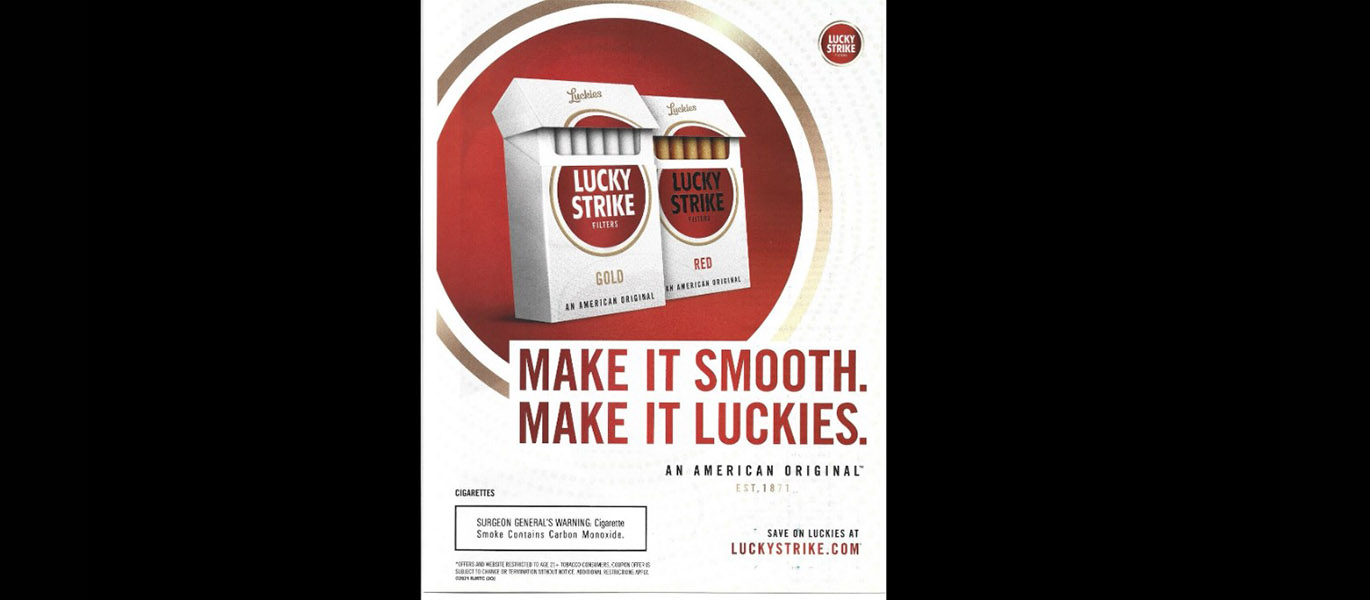Cigarette companies are mandated to include health warnings on their packages. As brands find new ways to balance the mandate and self-advertising, one has taken it a step further, argues a University of Guelph marketing professor.

In a commentary in Tobacco Control, a BMJ journal that publishes research on worldwide tobacco use, Dr. Timothy Dewhirst, a professor in the Gordon S. Lang School of Business and Economics, analyzes the latest marketing tactic used by Lucky Strike cigarettes.
Lucky Strike’s new ads use a rhetorical technique called an anaphora – the repetition of a word or phrase at the start of successive clauses. One advertisement has the claims “Always Smooth. Always Luckies”; another has “Make It Smooth. Make It Luckies.”
Dewhirst points out that the anaphors distract from the health warning, which tends to be “minimal in size, text only, and in black and white.”
“While advertising and promotion persist in the U.S., however, cigarette packages appearing in ad creative should require presentation of the package’s health warning,” he writes. “There is also an apparent need for enhancing both the mandated health warnings placed on cigarette packaging (e.g., being placed on the front-side and back-side and including graphic pictorials) and the U.S. Surgeon General warnings that are rotated for use in cigarette advertising.
“It would be fruitful for those in tobacco control to give renewed attention to the use of ‘smooth’ as a cigarette product descriptor, while also being mindful about the techniques commonly used by marketers and advertisers that serve to make highlighted product attributes more memorable and persuasive,” he adds.
Dewhirst is senior research fellow in marketing and public policy in the Department of Marketing. His research focuses on sports, arts and entertainment marketing. He is also an associate editor of Tobacco Control in product marketing and promotion.
Contact:
Dr. Timothy Dewhirst
dewhirst@uoguelph.ca
